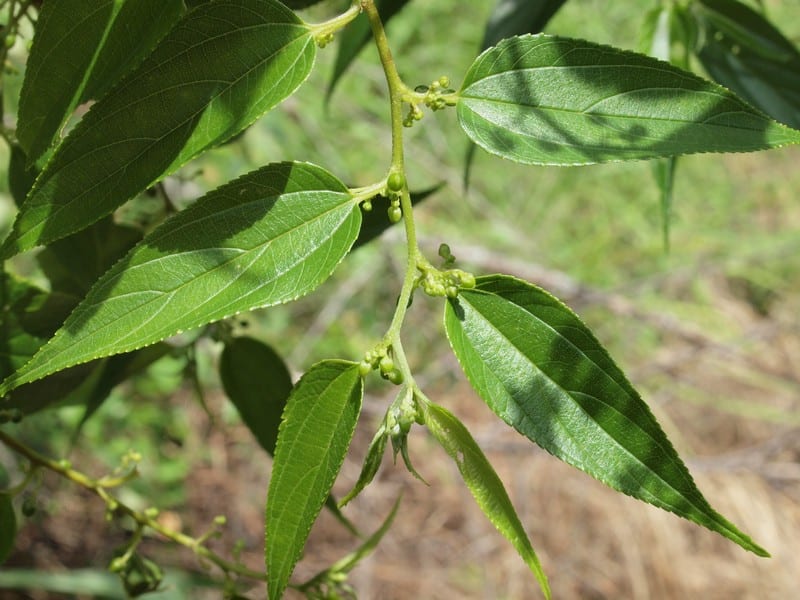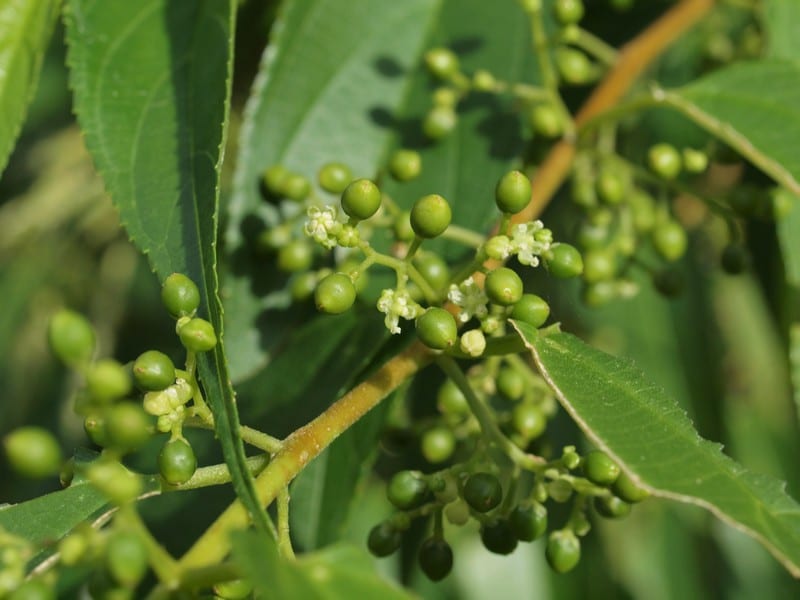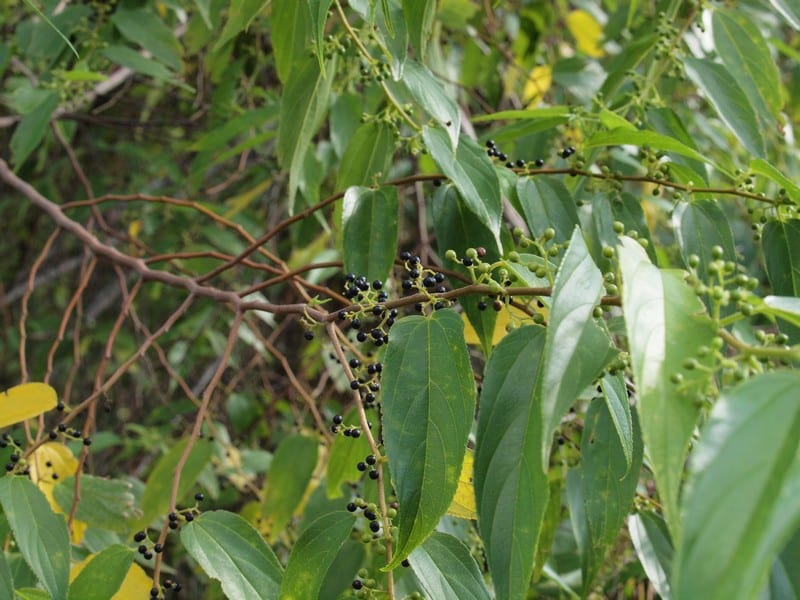Peach leafed poison bush, poison peach
Trema tomentosa, Fam. Ulmaceae








A multi-stemmed shrub or small tree usually 2-4m, though sometimes growing to around 6m.
| Weed Category: | |
| Weed: | No |
| Form or habit: | Shrub, Small tree |
| Family: | Ulmaceae |
| Leaf: | Simple Alternate Alternate, egg shaped to oval, 2-12.5 x1.5-5 cm, coarse (rough to touch), hairy, with serrated margins and prominent veins which usually extend for at least half the length of the leaf. Paler underneath. |
| Flower conspicuous: | Inconspicuous |
| Flower colour: |
Yellow, Cream, Green |
| Flower description: | Greenish to cream-yellow, 5-petalled, 0.1-0.2cm long, borne in small clusters in the leaf axils. |
| Fruit conspicuous: | Conspicuous |
| Fruit colour: |
Black |
| Fruit: | Fleshy |
| Fruit description: | Black, fleshy, globular, 0.2-0.3cm diameter |
| Habitat: | Open forest, rainforest, vine thicket, woodland. |
| Distribution | Widespread in coastal and inland districts, often found in dryer forest, in rainforest margins and regrowth and in eucalypt woodland in most states of Australia. |
| Food source for: | Fruit eaten by many birds including brown cuckoo dove, Lewin’s honeyeater, figbird and olive-backed Oriole. Larval food plant for speckled line-blue butterfly and the splendid ghost moth. |
| Toxicity: | Toxic if ingested, toxic or irritant to domestic pets. |
| Origin: | Australia |
| Notes: | Reported to be toxic to stock. The level of toxicity varies between individual plants but is considered most dangerous when stock have little else to eat. It should not be confused with the closely related, larger, non-toxic Peach Cedar (T. orientalis) |
| Information sources: | Jackes B. (2003) Plants of Magnetic Island 2nd ed., Melzer R. & Plumb J. (2007) Plants of Capricornia., Milson J. (2000) DPI Trees and Shrubs of north-west Queensland, Townsend K. & the Society for Growing Australian Plant Townsville Branch Inc. (1994) Across the Top: Gardening with Australian Plants in the tropics. |